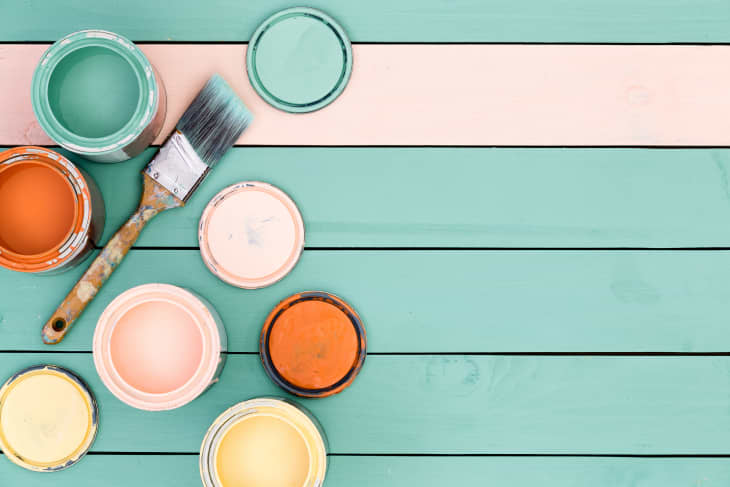Why You Should Add Baking Soda to Latex Paint

If you love the soft, vintage, matte look of chalk paint but don’t love the price — $40/pint! — consider making your own. With just latex paint ($10/gallon) and baking soda (<$1/box), you’ll be able to chalk paint everything you own, in any hue you desire. Latex paint plus baking soda equals DIY freedom!
What to Remember Before You Begin
Before you get started, here are a few tips:
- If possible, start with latex paint that’s on the matte side. This will enhance the chalky finish.
- Because of chalk paint’s texture and intense adhesion, you don’t need to sand your piece before painting it.
- Making your own chalk paint means you can start with paint custom-mixed to suit (but don’t forget to check out the Island of Misfit Paint at the hardware store for major bargains).
- Homemade chalk paint tends to dry quite quickly, so keep that in mind before and during the painting process.
- Some DIYers found baking soda chalk paint to be “a hot mess” and “extremely gritty,” so mixing is key. Some people report using a handheld kitchen mixer with good results.
Note: for each of these recipes, you can somewhat vary the amounts without drastically changing your final result. The more powder you add, the thicker the paint will get. Experiment to find what’s easiest to work with and which recipe produces your favorite result.
Chalk Paint Recipe #1: Baking Soda
This is the simplest version, using a basic box of baking soda you’ve got in your cupboard. If you have a quick or small project, and you don’t want to order any special materials, try this one out first.
- 1/2 cup baking soda
- 1 cup latex paint
- Water
Mix ingredients very, very well until the baking soda is completely dissolved. Add a couple of tablespoons of cold water to help mix everything together. This seems to be the trick to avoiding the gritty texture which some DIYers encountered while making this recipe for chalk paint.
Chalk Paint Recipe #2: Plaster of Paris
You can pick up Plaster of Paris in most hardware or craft stores.
- 1 part Plaster of Paris
- 3 parts latex paint (without primer)
- Water
Important: for this recipe, you can’t use paint with a primer in it —it will affect the texture and make it very difficult to paint. First, mix the plaster with water to get out all the lumps — it should be the consistency of pancake batter. Mix with the latex paint well, then paint your piece quickly. Once the paint is dry (after the desired number of coats), finish as desired.
Chalk Paint Recipe #3: Calcium Carbonate
Finally, several DIYers report that calcium carbonate dissolves best in water, and is, therefore a little less gritty to work with. Most likely, you’ll have to order online versus picking it up in the hardware store. Make sure that what you buy is 100% calcium carbonate.
- 1 cup latex paint
- 4 tablespoons Calcium Carbonate
- 2 tablespoons water
Stir ingredients together thoroughly, and then paint your piece quickly. Let dry overnight, then paint a second coat.
Finishing Techniques
1. After you’ve applied the paint, gently use sandpaper to add a charmingly distressed look. For detailed distressing instructions, check out our tutorial How To Give Furniture a Distressed Painted Finish.
2. Sand well to smooth out the texture, and finish with three coats of Minwax Wipe-On Poly or the polyurethane of your choice.
3. You can also use wax to seal the paint and make it more durable. By then buffing the wax, you can also create quite a nice sheen, which produces a nice silky feeling and effect.
Do you have experience with DIY chalk paint? What recipe worked best for you?